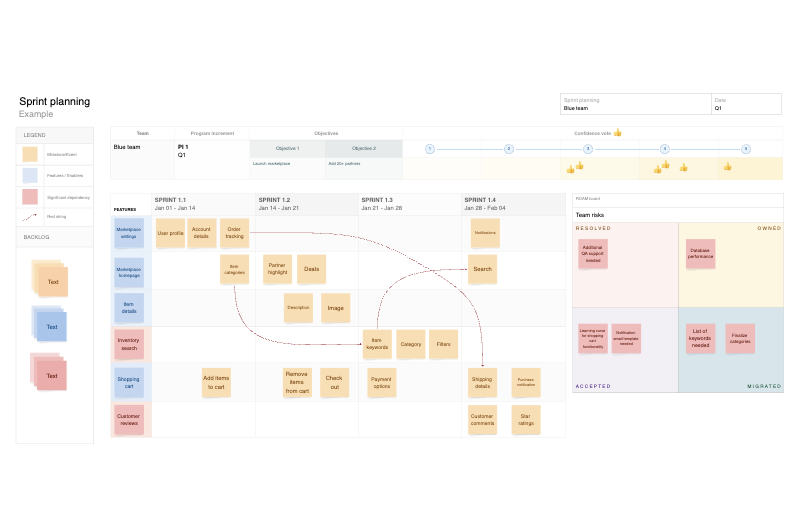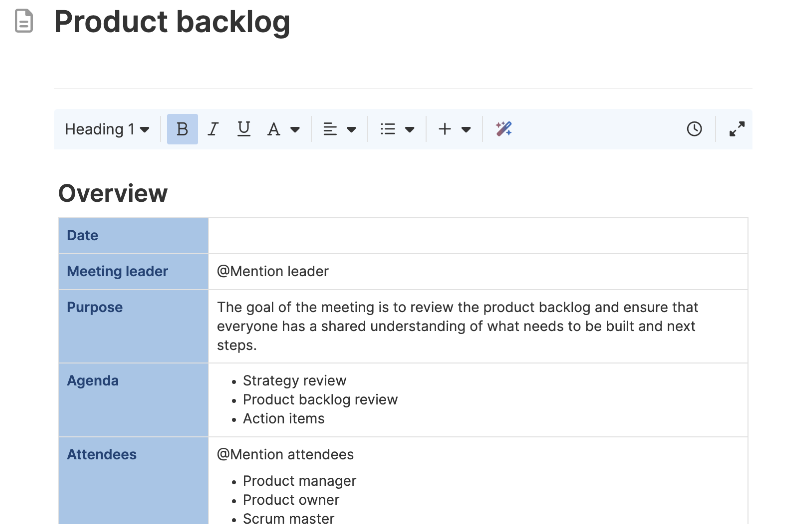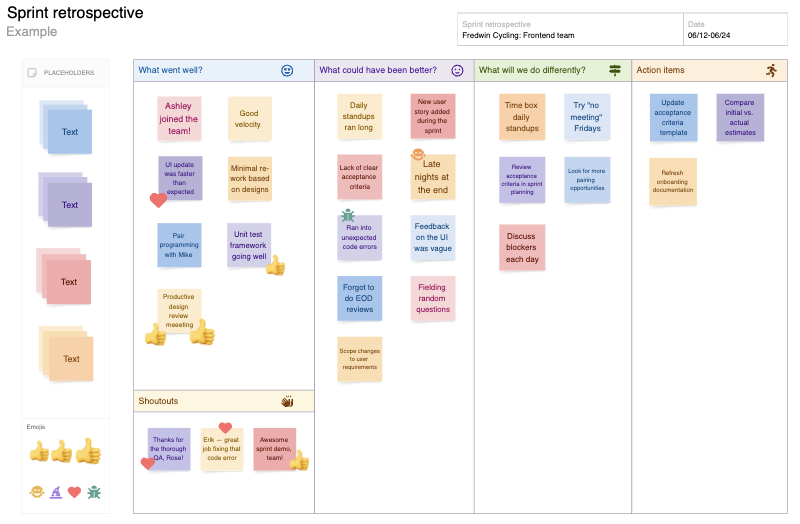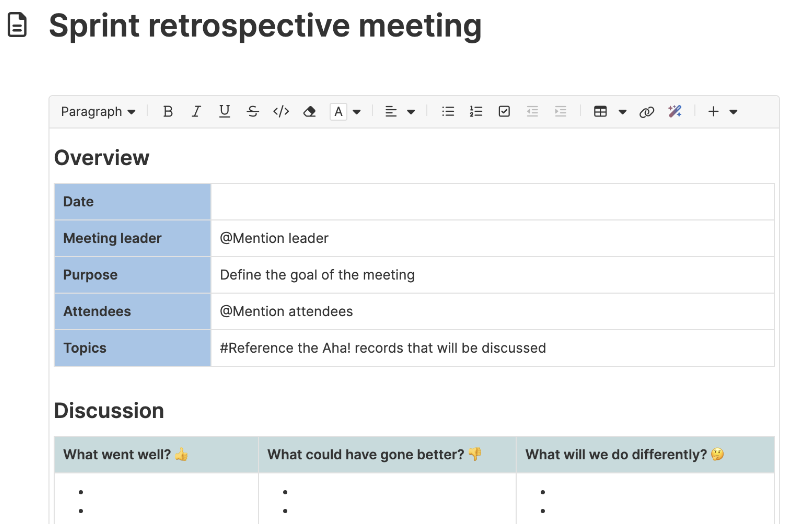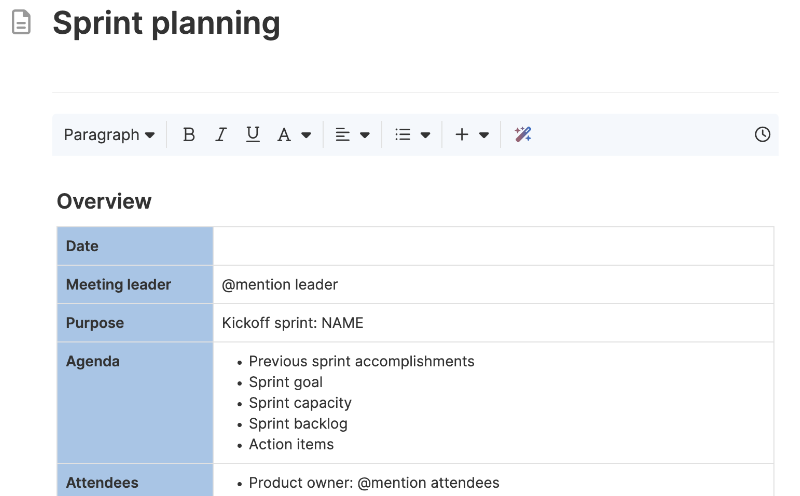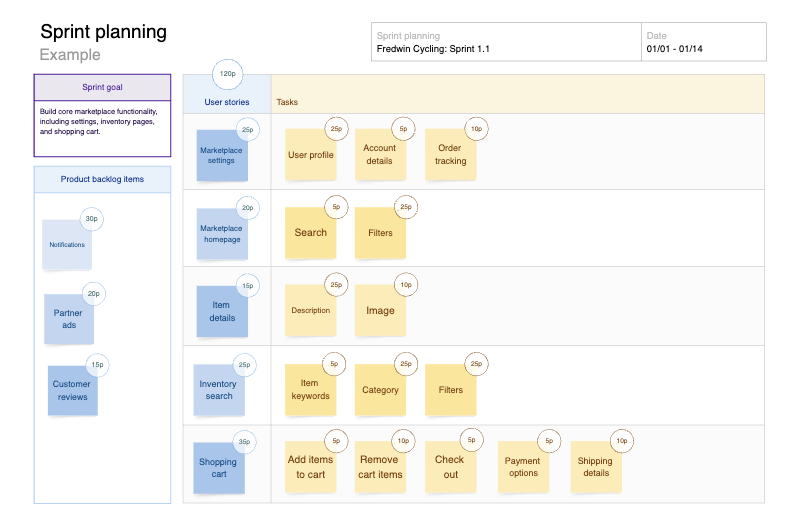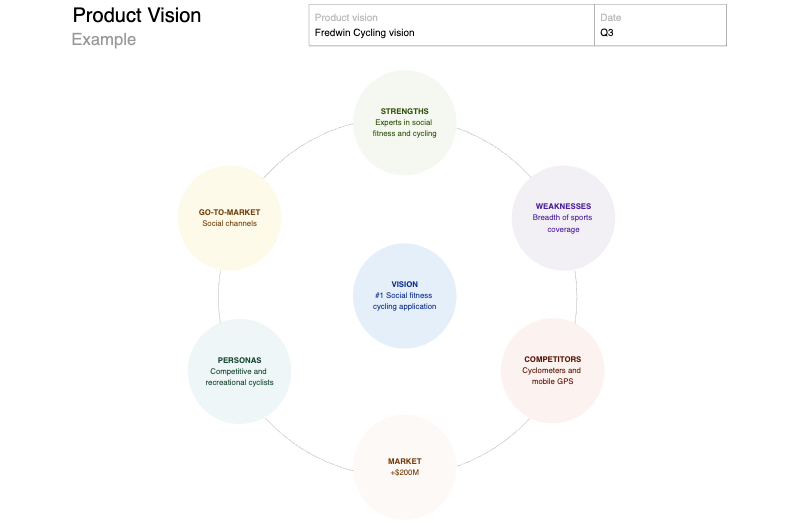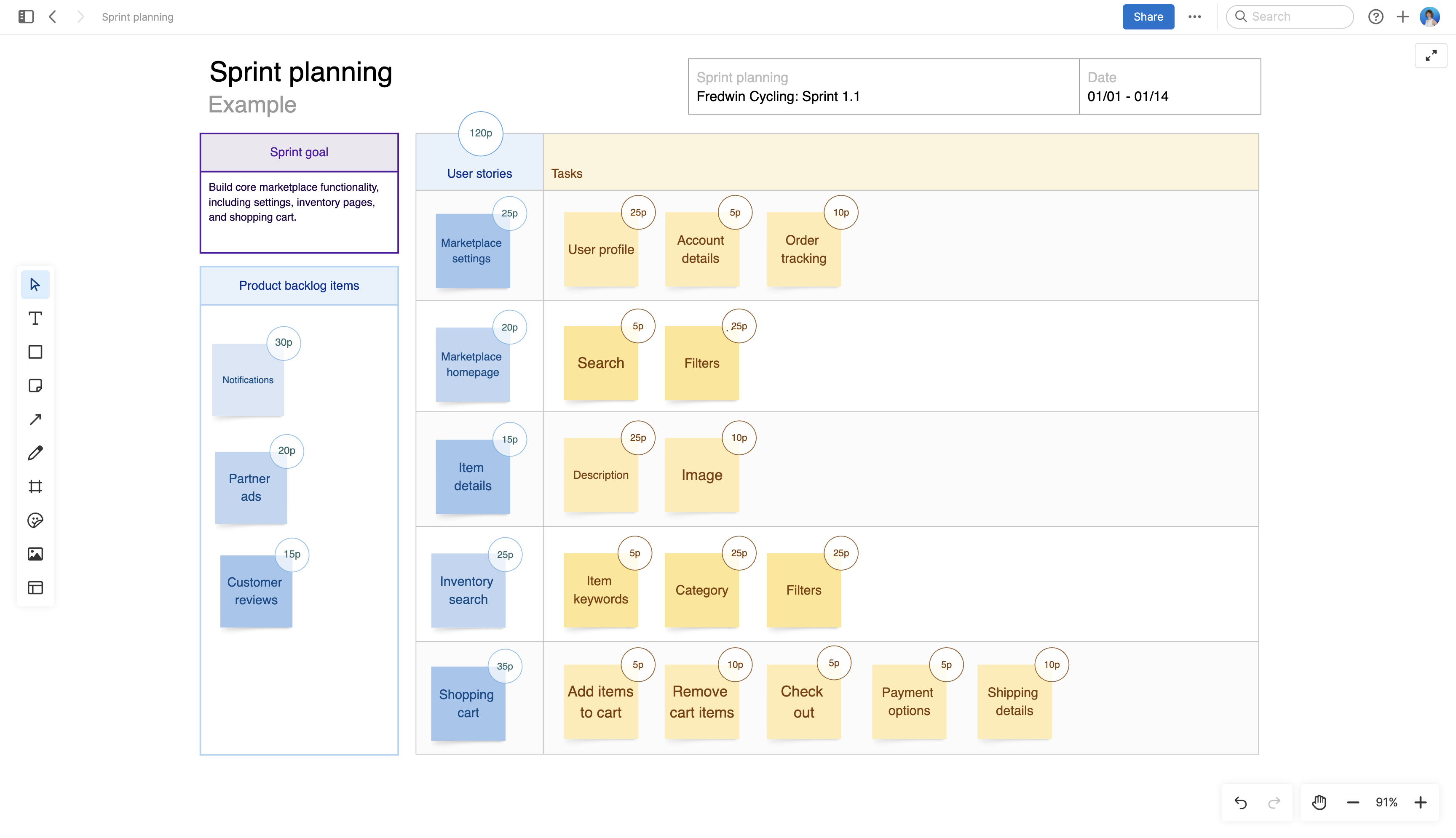
About the sprint planning template
Sprints give scrum teams a consistent rhythm. That cadence makes it easier to plan ahead, improve incrementally, and align on what comes next. Use this sprint planning template to define the user stories and tasks your team will take on during an upcoming sprint. Each row represents a story, with fields for effort estimates and subtasks. The structured layout helps you prioritize, evaluate trade-offs, and clarify what success looks like before development begins.
Included in the sprint planning template
This sprint planning template includes built-in capabilities such as:
A structured table with fields for story names, estimates, and subtasks
A pre-filled example sprint to help guide planning discussions
A menu of classic whiteboard features (including shapes, sticky notes, grids, and emojis)
Inline comments to gather feedback, questions, and ideas from teammates
A voting tool to gather confidence votes from collaborators
How to use the sprint planning template
Effective sprint planning depends on shared clarity: Define what the team will focus on, how much everyone can accomplish, and what still needs discussion. This template provides a visual space to organize your thoughts and finalize plans together. Use it during your sprint planning meetings or asynchronous prep sessions.
Start by adding your sprint goal in the top-left corner. Then, list user stories in the left column, adding estimated effort (in story points or time) and related subtasks in the right column. Use sticky notes to flag open questions or call out risks, and color-code everything by theme or owner to improve scannability. The product backlog section is where you can capture work that did not make the cut — a useful reference when negotiating scope or tracking deferred items.
Capture final decisions in comments once the team agrees on scope. If you use Aha! Develop, link each user story directly to your sprint to keep the work connected to larger product goals.
Best practices
Prioritize with purpose and get clear on what success looks like.
Review past performance: Look at the previous sprint's velocity and blockers to guide how much work to take on. Discuss what changed, what was deferred, and what helped or hindered progress.
Refine stories before the meeting: Make sure each story is well defined and estimated ahead of time. This keeps the focus on planning rather than backlog refinement.
Align on priorities and scope: Use the effort estimates and subtasks to evaluate trade-offs and finalize what will fit. Include just enough information on each story or task (such as key steps, blockers, or dependencies) to help the team start work confidently.
Keep the board up to date: After the meeting, link stories to your sprint in Aha! Develop. Refer back to the board during daily standups to reinforce shared understanding.
FAQs about the sprint planning template
What are some sprint planning best practices?
Begin with a defined sprint goal and refined backlog. Use estimates and capacity to guide how much to commit to. Create space to discuss blockers, clarify dependencies, and make thoughtful trade-offs as a team.
Who is this sprint planning template for?
This template is designed for scrum teams that want a structured, collaborative approach to sprint planning. It is especially useful for product managers, engineers, and scrum masters working together to clarify scope and plan the next iteration.
Is this template free to use?
Yes. To use this sprint planning template, sign up for a free 30-day trial of Aha! Whiteboards. (You can also try this template in Aha! Roadmaps if you need a complete product management solution.) Easily customize the template to suit your needs, then share it with as many people as you want (for free) to streamline collaboration.
